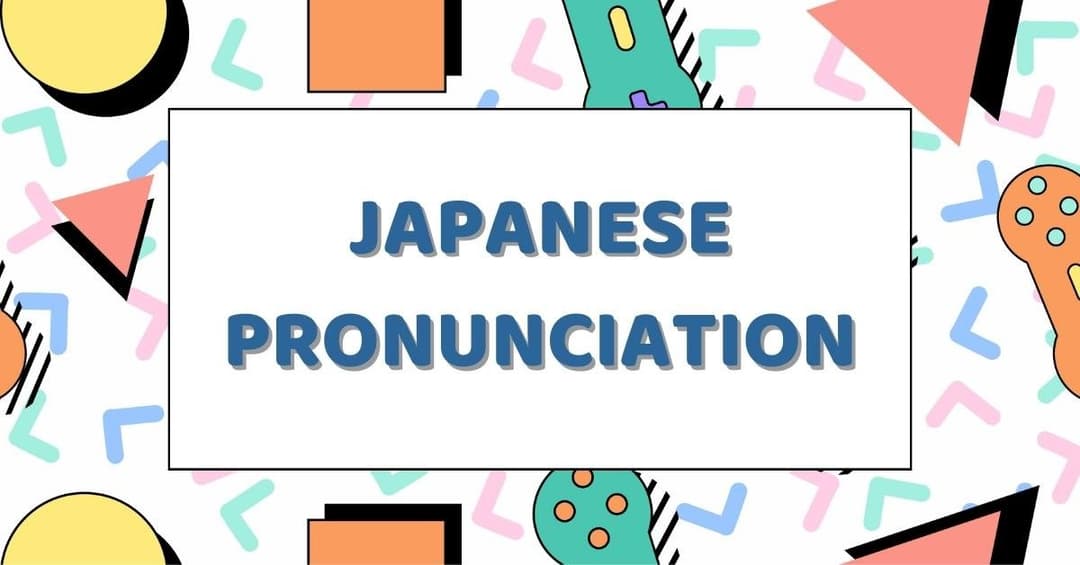
Japanese Pronunciation Guide – Tips to Sound More Natural
Published: 2025-04-01 10:04:16
Mastering Japanese pronunciation is essential for clear and natural communication. Unlike English, Japanese has a simpler phonetic system, but it requires precise control over vowel length, pitch accent, and rhythm. This guide covers key pronunciation rules, common mistakes, and expert tips to help you sound more like a native speaker.
Japanese Pronunciation Guide
1. Understanding Japanese Pronunciation
Unlike English, Japanese follows a consistent phonetic structure, making pronunciation more predictable. However, nuances such as vowel length, pitch accent, and sound reductions can impact meaning and fluency.
1.1 Japanese Vowel System
Japanese has five vowel sounds, each pronounced distinctly without variation:
- A (あ) – "ah" as in father
- I (い) – "ee" as in see
- U (う) – "oo" as in food (often whispered or omitted in casual speech)
- E (え) – "e" as in bet
- O (お) – "o" as in open
These vowels remain consistent and do not change like English vowels often do.
“Looking for a place to start your Japanese learning journey? Check out our list of Japanese Language Institutes in Delhi NCR to find the best options for your needs.”
1.2 Key Consonant Pronunciations
Japanese consonants are generally straightforward, but some require extra attention:
- R (ら, り, る, れ, ろ) – A soft, tapped sound between “L” and “D.” The tongue briefly touches the upper gum ridge, like a Spanish rolled r.
- F (ふ) – A breathy sound closer to "H" than a strong English "F." Try whispering “hoo.”
- Tsu (つ) – A “ts” sound, as in cats. It may be difficult for beginners to pronounce smoothly.
- N (ん) – Can shift to an "m" sound before "b" or "p" (e.g., senpai sounds more like sempai).
1.3 Pitch Accent – The Key to Natural Speech
Japanese does not use stress like English but relies on pitch accent to differentiate words. A change in pitch can alter a word’s meaning:
- Hashi (橋 – bridge) vs. Hashi (箸 – chopsticks) → Same spelling, different pitch pattern.
- Ame (雨 – rain) vs. Ame (飴 – candy) → Different pitch accents change meanings.
Listening to native speakers and mimicking their speech is crucial for mastering pitch accent.
2. Common Pronunciation Mistakes & Fixes
2.1 Ignoring Long Vowels
In Japanese, vowel length affects word meaning:
- Ojisan (おじさん – uncle) vs. Ojiisan (おじいさん – grandfather)
- Kōkō (高校 – high school) vs. Koko (ここ – here)
✅ Fix: Pay attention to vowel duration. Holding vowels for too short or too long can create misunderstandings.
“Struggling with pronunciation? Check out our tips on Improving Your Japanese Pronunciation Fast and perfect your accent for better communication.”
2.2 Mispronouncing “R” Sounds
Many learners pronounce ら, り, る, れ, ろ like an English "R" or "L."
✅ Fix: Practice tapping your tongue against the roof of your mouth quickly, similar to the Spanish "r" in pero.
2.3 Overpronouncing Silent “U” and “I”
The sounds U (う) and I (い) are often silent or barely pronounced at the end of words like:
- Desu (です) → Sounds like dess, not desu.
- Masu (ます) → Sounds like mass, not masu.
✅ Fix: Reduce or omit the final "u" sound in natural speech.
2.4 Wrong Pitch Accent Usage
Pitch accent errors can lead to misunderstandings:
- Ame (雨 – rain) ↓ vs. Ame (飴 – candy) ↑
- Hana (花 – flower) ↓ vs. Hana (鼻 – nose) ↑
✅ Fix: Listen carefully to native speakers and repeat their pronunciation to internalize pitch patterns.
“To further enhance your Japanese skills, don't forget to practice your listening. Check out these helpful Listening Exercises for Japanese Learners to improve your comprehension.”
3. Tips for Improving Japanese Pronunciation
3.1 Listen to Native Speakers
- Watch anime, J-dramas, and Japanese YouTube channels.
- Listen to NHK News Easy or podcasts designed for learners.
3.2 Use the Shadowing Technique
- Repeat sentences immediately after hearing them, copying rhythm and pitch.
- Mimic native speakers exactly without translating in your head.
3.3 Try Pronunciation Apps
- Forvo – Hear native speaker recordings.
- OJAD (Online Japanese Accent Dictionary) – Check pitch accent for words.
3.4 Record & Compare Your Speech
- Record yourself speaking Japanese.
- Compare with native recordings and adjust pronunciation accordingly.
3.5 Speak Slowly & Clearly
- Focus on accuracy first, then increase speed over time.
- Avoid rushing through words—clear pronunciation is more important.
“Want to speak Japanese fluently? Get valuable tips and strategies in our blog on how to Speak Japanese Fluently to take your skills to the next level.”
FAQs
1. How can I improve my Japanese pronunciation?
- Listen actively, practice shadowing, and focus on pitch accents.
2. Is Japanese pronunciation difficult?
- It’s simpler than English but requires mastering vowel length and pitch accents.
3. What are the hardest sounds for English speakers?
- The R sound (ら, り, る, れ, ろ) and Tsu (つ) are tricky.
4. Does Japanese have tones like Chinese?
- No, but it has pitch accents that affect word meanings.
5. How can I sound more like a native speaker?
- Focus on pitch accent, natural rhythm, and mimicking native speakers.
Mastering Japanese pronunciation takes time, but with consistent practice, listening, and repetition, you’ll develop a more natural and confident speaking style. Prioritize pitch accent, vowel length, and silent sounds, and you'll be on your way to sounding like a native!
